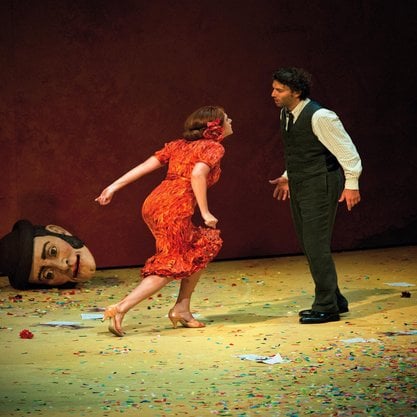Article
Shinkokugeki [New National Theater] By Wetmore, Kevin
Article
In response to the growth of shingeki, the actor Sawada Shōjirō developed a form of theater designed to appeal to the urban masses, especially in Tokyo, that blended elements of shingeki and kabuki with an overlay of patriotism, which he called shinkokugeki [new national theater], based on the principle of hanpozenshinshugi “half-step” forward. Shinkokugeki refers to both the style of performance and the company that performed it.
Waseda University student Sawada Shōjirō (1892–1929) became a shingeki actor in Tsubouchi Shōyō’s Bungei Kyōkai [Literary Arts Society], later achieving popularity in performances with the Geijutsu-za [Art Theater], appearing opposite Matsui Sumako, and with the Kindaigeki Kyōkai [Modern Drama Society]. He believed that shingeki was too elitist and other forms theaters too commercial and lowbrow. Sawada wanted to create theater that would appeal to the urban masses but that was also not crassly commercialized.

